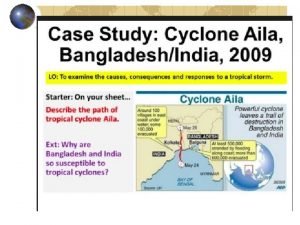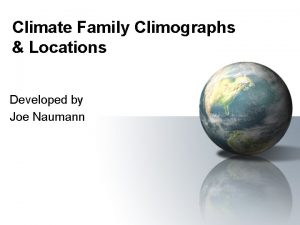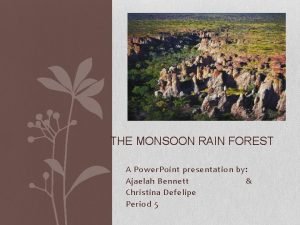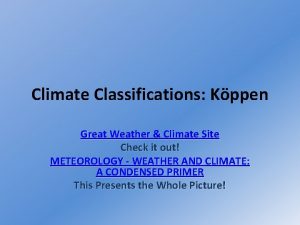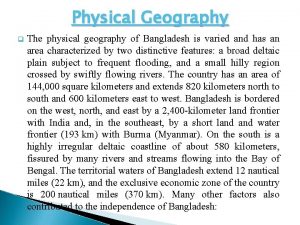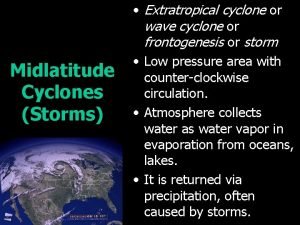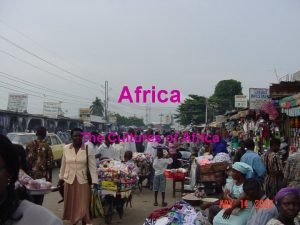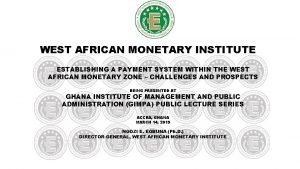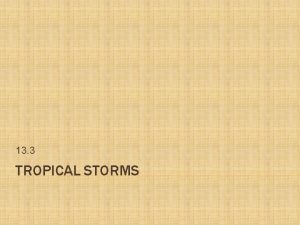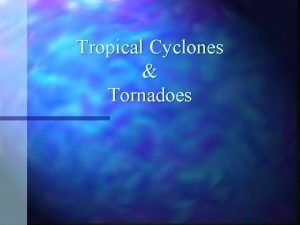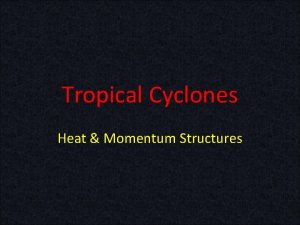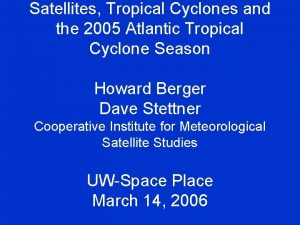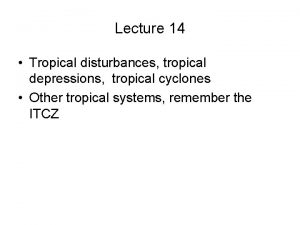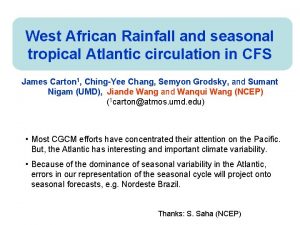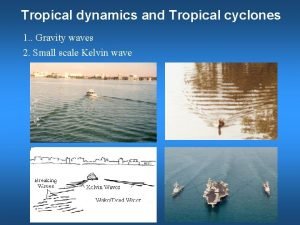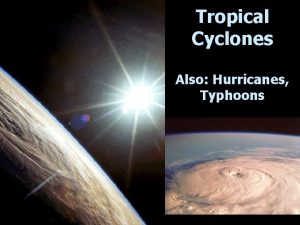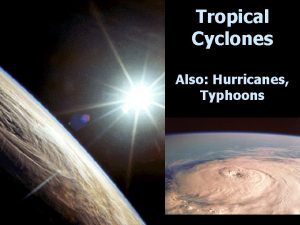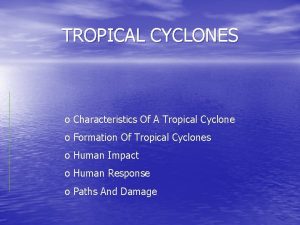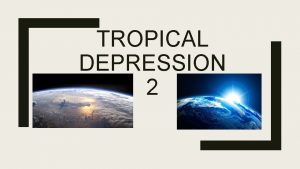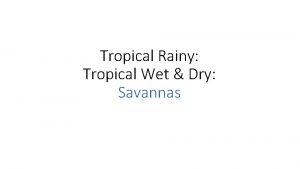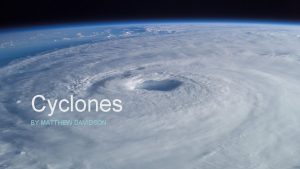West African Monsoon and Tropical Cyclones 1 Atlantic


















- Slides: 18

West African Monsoon and Tropical Cyclones 1. Atlantic tropical cyclone variability: A climate perspective 2. Do African easterly waves matter? : A weather perspective 3. Future studies

1. Atlantic Tropical Cyclone Variability (ATCV) There exists marked ATCV at interannual-to-decadal timescales. What are the causes? Are they predictable?

1. Atlantic Tropical Cyclone Variability (ATCV) Known factors: Tropical Atlantic SSTs ENSO West African rainfall Phase of QBO!!!

1. Atlantic Tropical Cyclone Variability (ATCV) Known factors: Tropical Atlantic SSTs ENSO West African rainfall Phase of QBO!!!

1. Atlantic Tropical Cyclone Variability (ATCV) Goldenberg and Shapiro (1996) Linear correlation coefficients: ENSO – ATCV -0. 41 Sahel Rainfall – ATCV +0. 70 Why is West Africa so important? large-scale environmental impacts (e. g. shear) weather systems (possibly)

1. Atlantic Tropical Cyclone Variability vertical wind shear between 200 mb and 925 mb

1. Atlantic Tropical Cyclone Variability Understanding the processes that influence the MDR shear and its variability is very important West Africa and East Pacific both provide important anomalous heat sources that can impact the MDR shear through tropical teleconnections

1. Atlantic Tropical Cyclone Variability Aiyyer and Thorncroft (2008) studied the variability of vertical shear and its causes in the 40 year ECMWF Reanalysis and other observations (SSTs, rainfall).

1. Atlantic Tropical Cyclone Variability Shading shows percentage variance in shear explained

1. Atlantic Tropical Cyclone Variability

1. Atlantic Tropical Cyclone Variability

1. Atlantic Tropical Cyclone Variability

1. Atlantic Tropical Cyclone Variability

1. Atlantic Tropical Cyclone Variability

1. Atlantic Tropical Cyclone Variability

1. Atlantic Tropical Cyclone Variability What about variability in the weather systems? Thorncroft and Hodges (2001)

1. Atlantic Tropical Cyclone Variability There is a hint that the number of strong vortices leaving the West African coast impacts ATCV but this is far from being a sure case. Recent analysis in the ERA 40 datset (Hopsch et al, 2006) suggests this relationship to be weak on interannual timescales - but not on interdecadal timescales!

1. Atlantic Tropical Cyclone Variability Conclusions: Variability in the large-scale environment in the tropical Atlantic strongly influences ATCV is influenced by ENSO and West African rainfall: associated with changes in shear patterns in the MDR subsidence? ENSO is more important on interannual timescales West Africa appears to be more important on multidecadal timescales Variability in African easterly waves may also have some influence but is likely not to be as important as large-scale environmental factors.
 Global distribution of tropical cyclones
Global distribution of tropical cyclones African monsoon
African monsoon Climograph savanna
Climograph savanna Rain forest
Rain forest Tundra temperature
Tundra temperature West african society and culture section 3
West african society and culture section 3 What are middle-latitude cyclones?
What are middle-latitude cyclones? Bangladesh physical geography
Bangladesh physical geography Mid latitude cyclone characteristics
Mid latitude cyclone characteristics What are middle-latitude cyclones?
What are middle-latitude cyclones? Are west african bantu
Are west african bantu Bantu culture
Bantu culture West african community council kent
West african community council kent West african monetary institute
West african monetary institute West african college of nursing lagos
West african college of nursing lagos West african kingdoms in order
West african kingdoms in order Where is christianity most practiced
Where is christianity most practiced West african societies around 1492
West african societies around 1492 Amazonian manatee adaptations
Amazonian manatee adaptations
